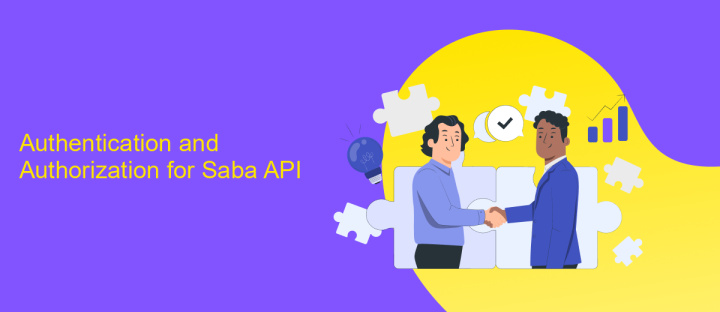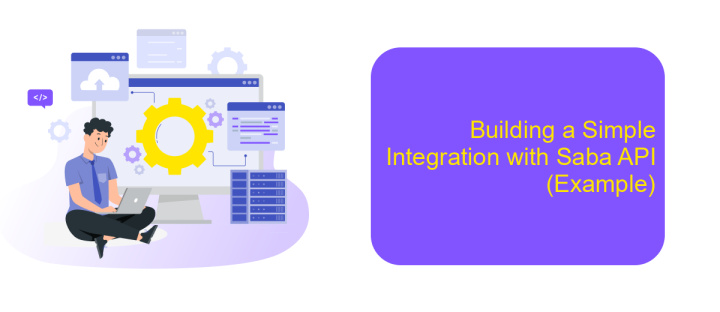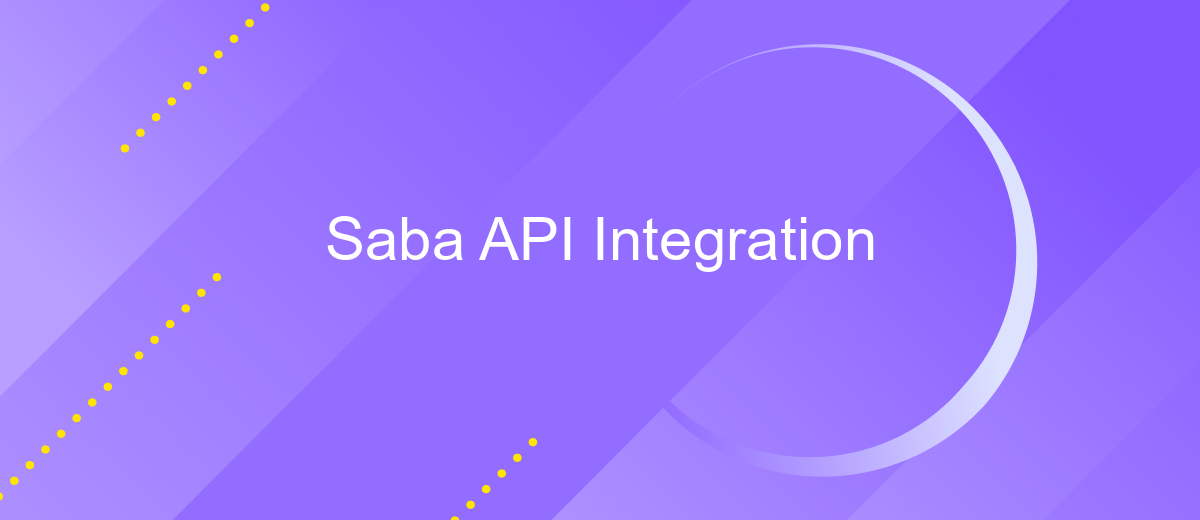Saba API Integration
Integrating the Saba API can significantly enhance your organization's learning and development capabilities by seamlessly connecting your existing systems with Saba's robust platform. This integration allows for automated data exchange, streamlined processes, and a more personalized user experience. By leveraging the power of Saba API, businesses can optimize their talent management strategies, improve training efficiency, and drive employee engagement, ultimately leading to a more agile and competitive workforce.
Introduction to Saba Cloud and its API
Saba Cloud is a comprehensive talent management platform that enables organizations to enhance their workforce capabilities through learning, performance, and engagement solutions. It provides a seamless experience for both employees and administrators, offering tools for learning management, performance assessments, and collaboration. Saba Cloud is designed to empower organizations to develop their talent and drive business success by aligning employee growth with strategic goals.
- Learning Management: Delivers personalized and scalable learning experiences.
- Performance Management: Facilitates continuous feedback and performance tracking.
- Engagement Tools: Enhances communication and collaboration among teams.
- Analytics: Provides insights to optimize talent strategies.
The Saba API (Application Programming Interface) extends the platform’s capabilities by allowing seamless integration with other systems. It enables developers to access and manipulate data within Saba Cloud, facilitating custom applications and workflows. With the API, organizations can tailor their talent management processes to meet specific needs, ensuring a more flexible and effective approach to workforce development. By leveraging Saba API, businesses can integrate third-party applications, automate processes, and enhance the overall user experience.
Authentication and Authorization for Saba API

Authentication and authorization are critical components when integrating with the Saba API. To ensure secure access, the Saba API employs OAuth 2.0, a robust framework that allows applications to obtain limited access to user accounts without exposing credentials. Developers must first register their application with Saba to receive client credentials, which include a client ID and client secret. These credentials are used to request an access token, a key element in the authentication process. Once obtained, the access token must be included in the header of every API request to authenticate and authorize the application’s access.
For seamless integration, leveraging services like ApiX-Drive can significantly streamline the process. ApiX-Drive offers a user-friendly interface to connect Saba with various platforms, automating data transfer and synchronization without requiring extensive coding knowledge. By using ApiX-Drive, businesses can efficiently manage authentication and authorization, ensuring that their integrations remain secure and compliant with Saba’s API standards. This approach not only saves time but also reduces the complexity involved in managing multiple API connections, allowing teams to focus on leveraging Saba’s capabilities to their fullest potential.
Key Saba API Endpoints and Use Cases

Saba API offers a comprehensive set of endpoints designed to enhance integration capabilities with its learning management system. These endpoints enable seamless data exchange, allowing developers to build robust applications that interact with Saba's platform efficiently. Understanding the key endpoints and their use cases is crucial for optimizing integration processes.
- User Management: This endpoint facilitates the creation, updating, and deletion of user profiles, ensuring that user data remains consistent across platforms.
- Course Catalog: Access detailed information about available courses, including descriptions, schedules, and enrollment options, enabling dynamic course listings.
- Learning History: Retrieve comprehensive records of user learning activities, which can be used for reporting and analytics purposes.
- Certification Tracking: Monitor and manage certification statuses and expirations, ensuring compliance and up-to-date qualifications.
- Event Management: Organize and manage learning events, including scheduling, registration, and attendance tracking, to streamline event logistics.
These endpoints provide the foundation for a wide range of use cases, from automated user onboarding to real-time reporting and analytics. By leveraging Saba API's capabilities, organizations can enhance their learning management processes, improve user engagement, and ensure data accuracy across systems.
Building a Simple Integration with Saba API (Example)

Integrating with the Saba API can significantly enhance your application by providing seamless access to learning management functionalities. To begin, familiarize yourself with the Saba API documentation to understand its capabilities and endpoints. This foundational knowledge is crucial for a successful integration.
Start by setting up your development environment. Ensure you have the necessary API keys and access tokens, which are required for authentication. These credentials can be obtained from the Saba developer portal. Once you have them, you can start making requests to the API.
- Choose the programming language you are comfortable with, such as Python or JavaScript.
- Install necessary libraries or packages for making HTTP requests, like axios for JavaScript or requests for Python.
- Write a function to authenticate and connect to the Saba API using your credentials.
- Test your connection by retrieving basic data, such as user information or course listings.
After establishing a connection and retrieving data, you can build more complex queries and integrate additional features. Remember to handle errors gracefully and secure your API keys to protect sensitive information. This approach ensures a robust and efficient integration with Saba's powerful API.


Best Practices and Troubleshooting for Saba API Integration
When integrating with the Saba API, it's crucial to adhere to best practices to ensure seamless functionality. Start by thoroughly reviewing the API documentation to understand the available endpoints and data structures. Implement robust authentication mechanisms to safeguard data exchanges. Utilize version control to manage changes in API versions effectively. Testing is paramount; use a sandbox environment to simulate real-world scenarios before deploying to production. Additionally, consider using integration platforms like ApiX-Drive, which can streamline the process and reduce manual workload by automating data transfers between Saba and other systems.
Troubleshooting Saba API integration involves identifying and resolving common issues such as authentication failures, incorrect data formats, or connectivity problems. Regularly monitor API logs to detect anomalies early. Ensure that error messages are descriptive and provide enough context for quick resolution. If issues persist, consult Saba's support resources or community forums for guidance. Keeping your integration tools, such as ApiX-Drive, updated can also prevent compatibility issues. By following these practices, you can enhance the reliability and efficiency of your Saba API integration.
FAQ
What is Saba API Integration?
How can I start integrating Saba API with my applications?
Can I automate the integration process without extensive coding knowledge?
What are the common use cases for Saba API Integration?
How do I ensure data security when using Saba API?
Apix-Drive is a simple and efficient system connector that will help you automate routine tasks and optimize business processes. You can save time and money, direct these resources to more important purposes. Test ApiX-Drive and make sure that this tool will relieve your employees and after 5 minutes of settings your business will start working faster.

